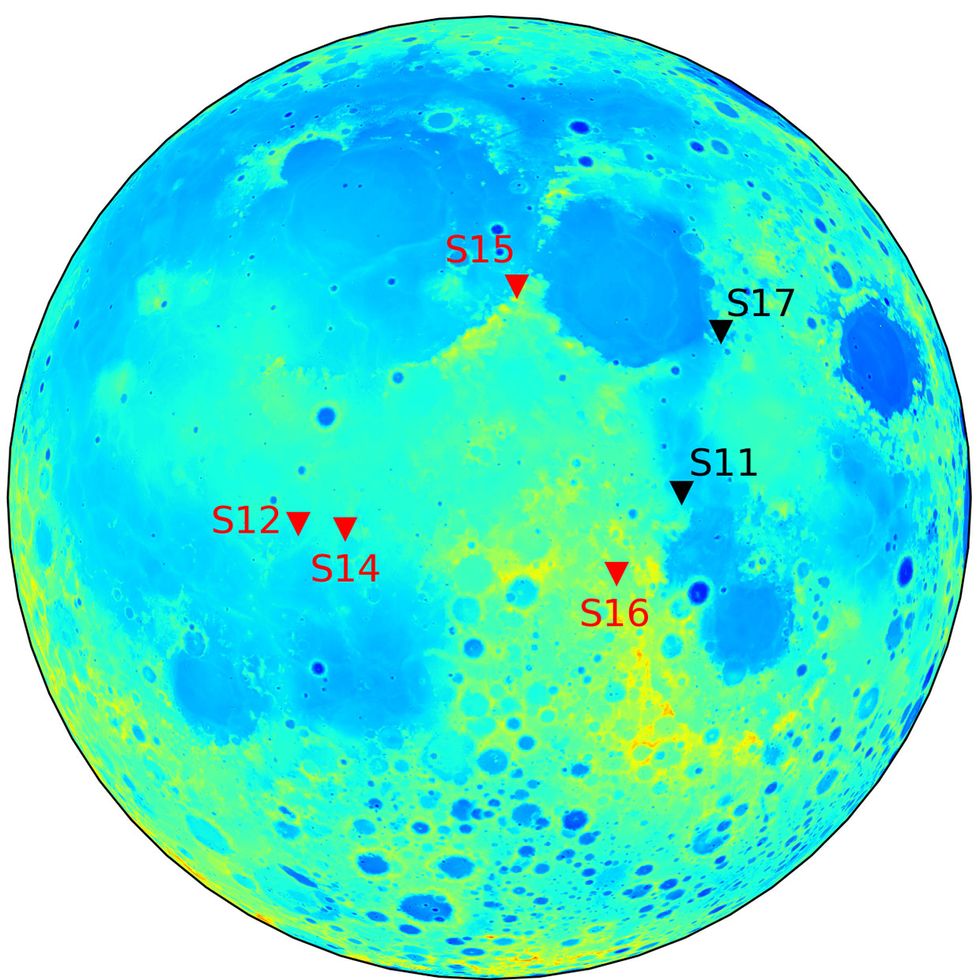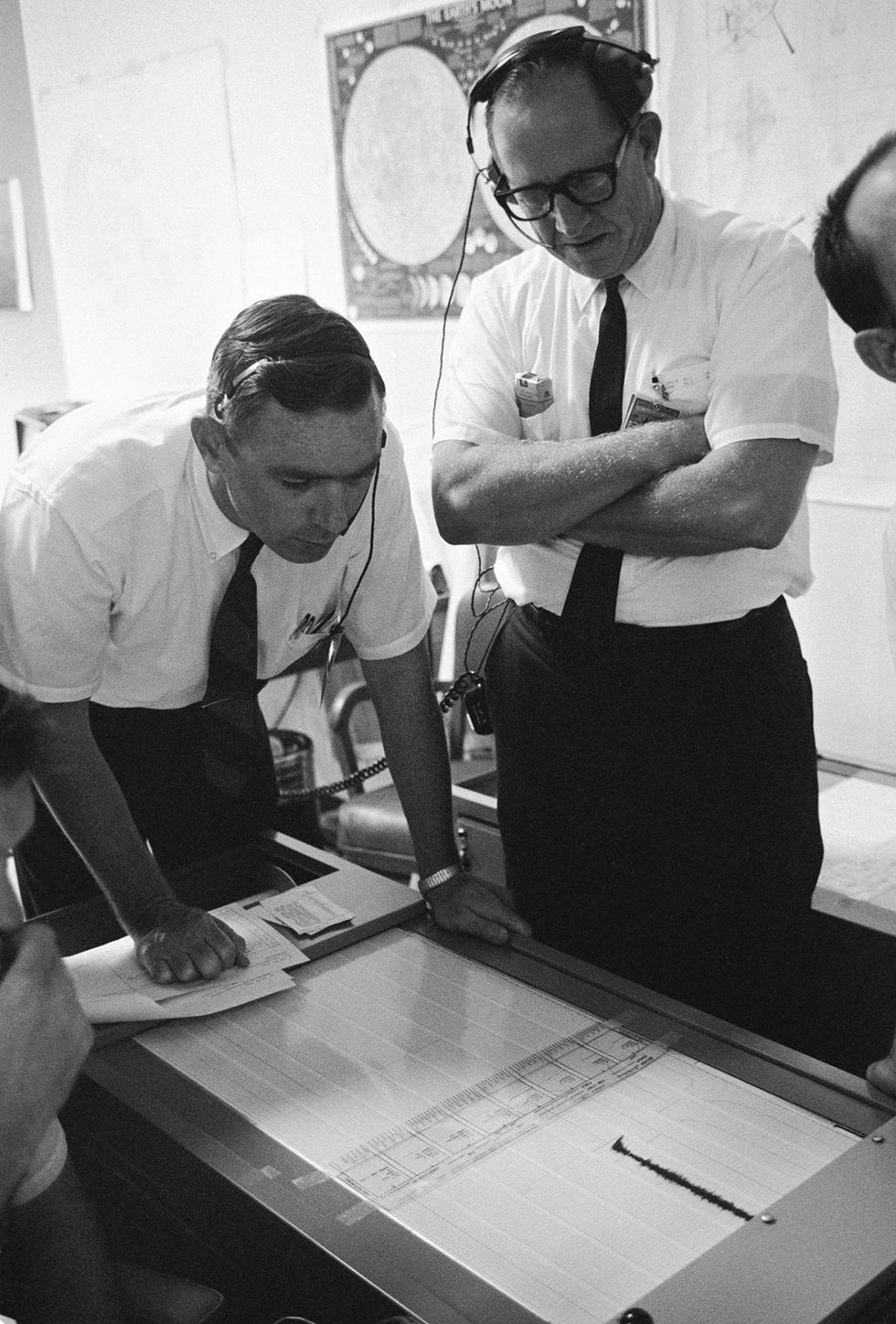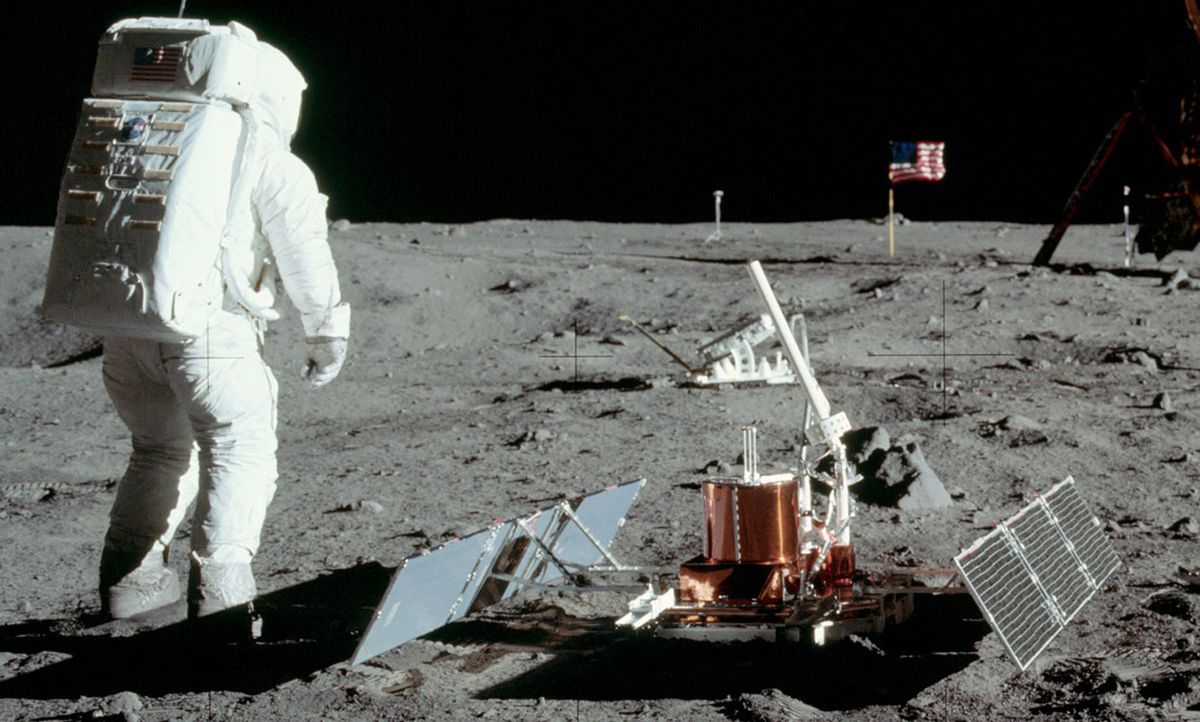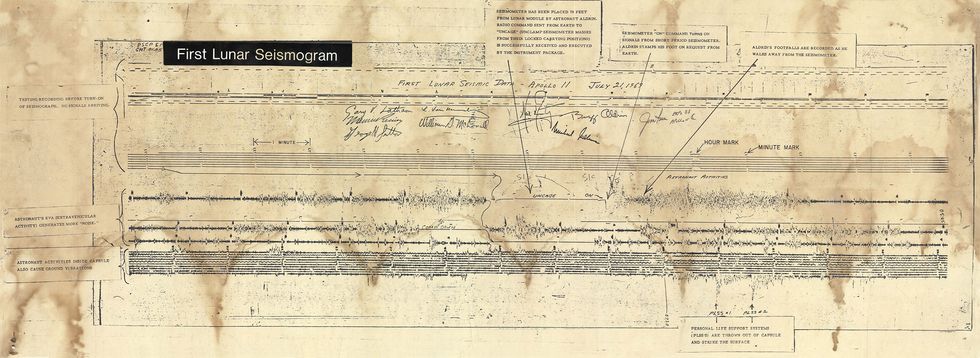The NASA probe that touched down on Mars earlier this week is carrying a sensitive seismometer to measure the Red Planet’s rumblings. But as it looks to expand what we know about otherworldly seismology, researchers remain transfixed by data from a much older source: seismometers set on the moon nearly 50 years ago.
Apollo astronauts placed the first of these instruments in 1969 on the Sea of Tranquility, a large lunar plain formed by ancient volcanic eruptions. These seismometers last sent signals earthbound in 1977. Now Ceri Nunn, a seismologist at NASA’s Jet Propulsion Laboratory, is working with colleagues to collect and clean up the decades-old data.
The idea is to collate this trove of information—which started life on 10,000 seven-track reel-to-reel magnetic tapes—into an easily downloaded and research-friendly format. Currently, copies of many of the tapes are accessible via the Japanese space agency JAXA’s website. The originals are stored at the National Space Science Data Center in Maryland, though some are at the University of Texas, and some may never have been archived.
The instruments recorded wave signals showing deep and shallow tremor, meteor, and spent-rocket impacts on the moon. “These data should be preserved for everybody to use in the future,” Nunn says. “Normally with an experiment that’s 50 years old, nobody would be that excited about revisiting it.”
It has already taken remarkable effort to keep this data intact for so long. And, remarkably, researchers keep teasing discoveries from it. In one example, lunar seismic events recorded at the time lay dormant in the data, unseen for decades. In another, NASA researchers looked back to the legacy data to fill in new details about the lunar core.
Seismometers measure amplitude and frequency of ground motion. These vibrations travel outward from events as large as earthquakes (or moonquakes) and as small as an astronaut’s footfall: Buzz Aldrin’s was recorded as the first Apollo seismometer came online.

The Apollo missions set up a wide array of seismic experiments. Yosio Nakamura, whose long career in seismology traces the arc of the Apollo efforts, said in an interview with IEEE Spectrum that it was the longest and best of only three occasions of seismic data collection from the surface of an extraterrestrial body. The others involved the Viking probes that traveled to Mars in the late 1970s and the very brief measurements made by the Soviet Venera missions to Venus in 1982.
“Signals that were recorded on the moon did not look anything like those of earthquakes or explosions here on Earth,” Nakamura writes in a chapter of the Extraterrestrial Seismologysurvey. The quiet of the moon gave the Apollo seismometers a singular voice, he says, absent the heavy noise from Earth’s oceans, atmosphere, and inhabitants. Lunar seismic waves roll on at length, slowly subsiding as if emanating from a gong. But eventually, facing battery and budget shortages, the instruments shut down and stopped recording them.
Nakamura vividly remembers moving a large chunk of the lunar data in 1992 from the original seven-track reels to 8-millimeter videocassettes. This digital preservation is paying dividends, as is the archival gumshoe work he and several colleagues did in 2010 to track down and recover hundreds of tapes forgotten and stashed away in a U.S. federal records warehouse.
In fact, Nakamura and his colleagues just finished a years-long process of extracting and formatting that data, creating a digital catalog of the thousands of science and engineering reports corresponding to the instruments. He says there are all kinds of things that can be done with this catalog, such as answering questions about what the interior of the moon looks like and how it was formed and developed. “There’s valuable information still hidden, waiting to be extracted,” he says.

Indeed, the original experiments keep producing results, as seismologists use state-of-the-art tools to reexamine these lunar pulses. Researchers at the Max Planck Institute for Solar System Research, in Göttingen, Germany, and NASA’s Marshall Space Flight Center have used pattern-recognition algorithms on the Apollo data to flag potential seismic events for new analysis.
Brigitte Knapmeyer-Endrun, a planetary seismologist at the University of Cologne, in Germany, says the teams look for patterns in amplitudes and frequencies that signal seismic activity: in this case, by building custom models on top of speech-recognition software. It’s possible to deduce probabilities from these waveforms that something significant might be happening, and then zoom in closer for a look. This kind of interpolation can uncover new information. Nunn is also trying to use interpolation to correct blips in the seismology data, where errors can affect frame counts, time stamps, and data records.
Other avenues beckon as well. Marshall’s Renee Weber and colleagues once ran an analysis using polarization filters, which can aid researchers in telling from which direction seismic waves are coming, to improve the signal-to-noise ratio in the Apollo lunar seismograms. Their results suggest the moon has a solid inner core surrounded by a fluid outer layer.
Nunn and her colleagues are now trying to put the Apollo data into a downloadable format that seismologists commonly use called SEED, which stores information about the trace (or amplitude) of the signal and the sampling rate. “We want to make it easier for people to do new work,” Nunn says.
To do so, Nunn says, they have to be able to tell people how to correct for anomalies contained in the long-ago experiments. That includes things like time variances between the moon and Earth, which made for a sometimes-irregular signal, as did daily temperature variations. To complicate matters further, the data from time to time also shows weird digital spikes caused by “bit swap” where, during the journey from the moon to Earth, a null became registered as a one, or vice versa.
Heiner Igel, a computational seismologist at the University of Munich, has worked with Nunn in a bid to compare Apollo seismograms with models of the lunar surface. That problem is not really solved: wave-scattering modeling is, at the moment, still too computationally expensive. But Igel expects the old data sets will keep delivering new insights: “Absolutely,” he says. “That’s the whole point.”
Michael Dumiak is a Berlin-based writer and reporter covering science and culture and a longtime contributor to IEEE Spectrum. For Spectrum, he has covered digital models of ailing hearts in Belgrade, reported on technology from Minsk and shale energy from the Estonian-Russian border, explored cryonics in Saarland, and followed the controversial phaseout of incandescent lightbulbs in Berlin. He is author and editor of Woods and the Sea: Estonian Design and the Virtual Frontier.




